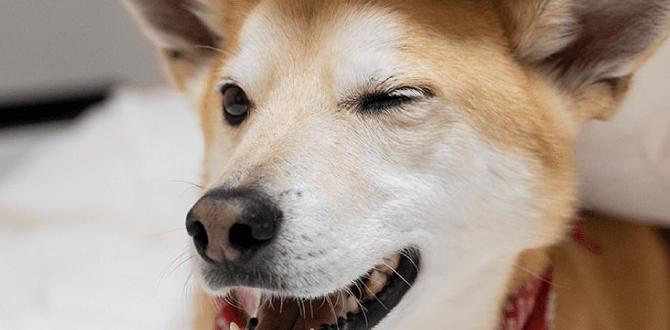Canine dominance issues at home can be a frustrating and sometimes even concerning challenge for dog owners. For many, the word “dominance” conjures images of aggressive dogs pushing their way to the front, demanding attention, or even showing outright aggression. While these behaviors can certainly be present, the concept of “canine dominance” is often misunderstood and oversimplified in the world of dog training. Instead of a rigid hierarchy where dogs are constantly vying for the “top spot,” it’s more helpful to view these issues as a breakdown in clear communication and established boundaries between dog and owner.
Understanding that your dog might be exhibiting behaviors stemming from a lack of clear leadership doesn’t mean your dog is a “bad” dog. It simply means they haven’t yet learned the rules of your household or understand what is expected of them. The good news is that these issues are often solvable with patience, consistency, and a thoughtful approach to training. This article will delve into common signs of canine dominance issues at home and offer practical, effective strategies to address them, allowing you to build a more harmonious relationship with your furry companion.
Identifying Signs of Canine Dominance Issues at Home
Before we can solve the problem, we need to be able to recognize it. While some behaviors might seem overtly aggressive, others can be more subtle. It’s important to observe your dog’s overall behavior and look for patterns.
Some common indicators that might point towards dominance-related struggles include:
Resource Guarding: This is perhaps one of the most classic signs. Your dog may growl, snap, or even bite if you try to take away their food, toys, or even a prime resting spot. This isn’t just about protecting their prized possessions; it can be about perceived control over valuable resources.
Ignoring Commands or Selective Obedience: Does your dog only listen when they feel like it? If they consistently ignore cues like “sit,” “stay,” or “come,” especially when there are perceived higher-value rewards (like going outside or interacting with other people), it could indicate they don’t see you as the ultimate authority.
Pushing for Attention or Demanding Affection: This might manifest as jumping on you, nudging your hand repeatedly, or barking incessantly until you give them attention. While some dogs are naturally more “clingy,” a persistent and demanding approach can stem from a desire to be in control of your interactions.
Leash Reactivity/Pulling: A dog that constantly pulls on the leash, darts ahead, or tries to dictate the direction of your walk might be exhibiting a desire to lead. In their mind, they are in charge of where you are going.
Territorial Barking: Excessive barking at anyone who approaches the door or enters their perceived territory can be a sign of trying to “protect” their space and alert you to perceived intruders.
Disruptive Behaviors: Behaviors like stealing items, destructive chewing when left alone (beyond separation anxiety), or generally being unruly can sometimes be linked to a dog trying to assert a level of control in their environment.
It’s crucial to differentiate these behaviors from typical playful puppy exuberance or occasional missteps. These issues become problematic when they are persistent, escalate, or create an unsafe or chaotic living environment.
Establishing Leadership: The Cornerstone of Solving Canine Dominance Issues
The most effective way to tackle canine dominance issues at home is to establish yourself as the benevolent leader your dog looks to for guidance. This doesn’t mean being harsh or using force; in fact, that can often backfire, leading to fear and increased aggression. Instead, it’s about clear communication, setting boundaries, and consistent reinforcement of desired behaviors.
Here are key strategies to implement:
1. Consistent Training and Clear Communication
Basic Obedience is Non-Negotiable: A dog that responds reliably to basic commands like “sit,” “stay,” “down,” and “come” is a dog that understands who sets the rules. Regular training sessions, even short ones, reinforce this understanding. Use positive reinforcement methods, rewarding your dog with praise, treats, or toys for correct responses.
“Nothing in Life is Free” (NILIF): This principle encourages your dog to “earn” everything they want, whether it’s food, praise, walks, or playtime. Before you give them their meal, have them sit. Before you open the door to go outside, have them sit and wait. This consistently reinforces that you control the resources and that good things come from cooperating with you.
Controlled Entry and Exit: Teach your dog to wait patiently by doors before going outside or coming back in. You should always be the first one to go through a doorway or ascend stairs. This physically demonstrates your leadership in navigating the environment.
2. Managing Resources Effectively
Controlled Feeding: Feed your dog after you have eaten. Don’t allow them to mob you while you’re trying to consume your meal. Supervise their mealtime and remove the bowl after a reasonable period, even if they haven’t finished. This prevents resource guarding around food.
Toy Management: Don’t allow your dog to hoard toys. Periodically ask for toys back, rewarding them with a new toy or a treat when they politely release it. If your dog shows signs of guarding, avoid direct confrontations. Instead, redirect their attention with a higher-value item, then take the guarded toy.
3. Setting Boundaries and Maintaining Routine
Leash Manners are Crucial: Invest time in teaching your dog to walk politely on a leash. If they pull, stop walking until the leash is slack. Reward them for walking by your side. A dog that maintains loose-leash walking shows they are not in charge of the direction of travel.
Designated Resting Spots: While allowing your dog on the furniture can be fine for some owners, if certain spots are triggers for dominance issues, consider restricting access to them. Ensure your dog has their own comfortable bed and that it’s a safe haven, not a battleground.
Calm Greetings: Teach your dog to greet visitors calmly. This often involves having them sit when people enter the home. If they jump or get too excited, turn away and ignore them until they settle down.
4. Professional Support When Needed
Sometimes, particularly if aggression is involved, seeking the guidance of a qualified, positive reinforcement-based dog trainer or a veterinary behaviorist is essential. They can assess the specific nuances of your dog’s behavior, identify any underlying medical causes, and develop a tailored behavior modification plan. They can help you interpret your dog’s body language accurately and provide strategies to de-escalate potential conflicts safely.
The Power of Patience and Consistency
Addressing canine dominance issues at home is rarely an overnight fix. It requires a commitment to consistent effort and a deep understanding of your dog’s motivations. By shifting your focus from “dominance” as a personality flaw to understanding it as a communication breakdown, you can approach the situation with empathy and a clear path forward.
Remember, your dog is looking to you for cues and leadership. By providing that leadership with consistency, patience, and positive reinforcement, you can resolve these challenges, strengthen your bond, and create a more peaceful and enjoyable home for both you and your beloved canine companion.
Meet Elyse Colburn, the devoted canine companion and storyteller behind the enchanting world of “Tales, Tails, and Adventures Unleashed.” A passionate dog enthusiast with a heart full of paw prints, Elyse Colburn shares heartwarming tales and insightful adventures, celebrating the joy, loyalty, and endless antics that make every dog a true hero. Join Elyse Colburn on this tail-wagging journey, where every post is a love letter to our four-legged friends.






